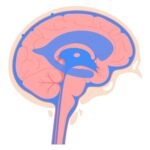Parkinson’s disease (PD) has long been understood as a progressive neurodegenerative disorder primarily characterized by the loss of dopamine-producing neurons in specific areas of the brain, leading to the debilitating motor symptoms associated with the condition, such as tremors, rigidity, and difficulty with balance.
However, the exact mechanisms that initiate this neuronal damage have remained a complex and elusive puzzle for scientists. A groundbreaking new study, spearheaded by a team of researchers from Wuhan University in China, is now offering a potentially revolutionary perspective, suggesting that Parkinson’s disease might not always originate in the brain itself, but rather in a previously unexpected peripheral organ: the kidneys.
This paradigm-shifting research primarily focuses on the alpha-synuclein (α-Syn) protein, a key player universally recognized as being intricately linked to Parkinson’s pathogenesis. In healthy individuals, α-Syn plays various roles in brain function, but when its production goes awry, it can misfold and aggregate into toxic clumps, known as Lewy bodies, which are the neuropathological hallmark of PD. These abnormal protein aggregates are known to interfere with neuronal function and eventually lead to cell death in the brain.
The pivotal discovery highlighted by the Wuhan University team is the compelling evidence that these α-Syn clumps can indeed build up in the kidneys, raising the tantalizing possibility that these misfolded proteins could then travel from the kidneys to the brain, potentially acting as a trigger for the disease’s onset. As the researchers emphatically state in their published paper, “We demonstrate that the kidney is a peripheral organ that serves as an origin of pathological α-Syn.” This finding opens entirely new avenues for understanding, diagnosing, and potentially treating Parkinson’s disease.
The Alpha-Synuclein Connection: A Misfolding Mystery
Understanding the role of alpha-synuclein is central to grasping the new study’s implications for Parkinson’s disease.
The Protein’s Malfunction in Parkinson’s
At the heart of Parkinson’s disease pathology lies the alpha-synuclein (α-Syn) protein. Normally, α-Syn is abundant in the brain, where it is believed to play a role in synaptic function, contributing to the transmission of signals between neurons. However, in individuals with Parkinson’s and related conditions, this protein undergoes a critical malfunction. Instead of maintaining its proper structure, α-Syn begins to misfold and aggregate, forming abnormal, insoluble clumps. These pathological aggregates are often referred to as Lewy bodies when found within the cell bodies of neurons, and Lewy neurites when found in their projections.
The accumulation of these misfolded α-Syn protein clumps is highly toxic to neurons. They are thought to disrupt various cellular processes, including mitochondrial function (the cell’s powerhouses), waste disposal systems, and synaptic communication, ultimately leading to the progressive dysfunction and eventual death of dopamine-producing neurons in a specific area of the brain called the substantia nigra. The drastic drop in dopamine production in this region is directly responsible for the motor symptoms characteristic of Parkinson’s, such as tremors, bradykinesia (slow movement), rigidity, and postural instability.
The presence and spread of these α-Syn aggregates are considered a defining feature of Parkinson’s disease and other neurodegenerative conditions collectively known as synucleinopathies, including Lewy body dementia.
A Peripheral Origin Hypothesis
The conventional understanding largely places the initial accumulation and misfolding of α-Syn within the brain itself, or perhaps within the gut, as suggested by prior research. However, the study from Wuhan University introduces a radical new hypothesis: that the kidneys could serve as an initial site for the pathological accumulation of α-Syn. The researchers posited that if α-Syn clumps can indeed originate in the kidneys, these abnormal proteins might then find a way to travel from the kidneys to the brain, thereby potentially triggering the onset or progression of Parkinson’s disease.
This hypothesis aligns with a growing body of research suggesting that Parkinson’s and other neurodegenerative diseases might have origins outside the central nervous system, often referred to as the “gut-brain axis” or, in this new context, a “kidney-brain axis.” The idea is that misfolded proteins can behave in a “prion-like” manner, inducing other normally folded proteins to misfold and spread throughout the body’s interconnected systems. This new perspective on the origin of pathological α-Syn accumulation in a peripheral organ like the kidney opens up exciting possibilities for earlier detection, and for therapeutic interventions that might target these peripheral sites to prevent or slow the progression of the disease before significant brain damage occurs.
Evidence from Human and Animal Studies
The research team employed a rigorous combination of human tissue analysis and animal modeling to build a compelling case for their kidney-origin hypothesis.
Human Tissue Analysis: Unveiling Kidney Clumps
The Wuhan University research team conducted multiple meticulous tests, beginning with the analysis of human tissue samples. This crucial part of the study involved examining tissues from individuals with various conditions, including those definitively diagnosed with Parkinson’s disease, as well as people suffering from chronic kidney disease. This comparative approach allowed them to identify patterns of α-Syn accumulation beyond the brain.
A significant finding emerged from this analysis: the team detected abnormal α-Syn growth in the kidneys of 10 out of 11 people who had Parkinson’s disease and other types of dementia specifically related to Lewy bodies. Lewy bodies are the hallmark pathological protein clumps of α-Syn found in the brains of Parkinson’s patients. This strong correlation between kidney α-Syn pathology and diagnosed neurodegenerative conditions provides compelling preliminary evidence.
What’s even more striking is that in another batch of samples, similar protein malfunctions were discovered in 17 out of 20 patients with chronic kidney disease, even though these individuals showed no overt signs of neurological disorders or Parkinsonian symptoms. This particular observation is highly significant because it suggests that the kidneys might be an early site where these harmful proteins begin to gather, potentially before any detectable brain damage or neurological symptoms manifest. This provides a crucial piece of the puzzle, indicating that kidney-based α-Syn pathology could precede central nervous system involvement.
Animal Models: Tracing the Spread
To further validate their hypothesis and understand the mechanisms of α-Syn spread, the researchers utilized genetically engineered mice, allowing them to precisely control and observe the behavior of α-Syn. The animal tests provided robust backing for their theories. In a critical experiment, mice with healthy, normally functioning kidneys were injected with α-Syn clumps. The results showed that these healthy kidneys efficiently cleared out the injected α-Syn, indicating a natural protective mechanism.
However, a drastically different outcome was observed in mice with impaired or non-functioning kidneys. In these animals, when α-Syn proteins were introduced, they began to build up significantly within the kidneys. More alarmingly, these accumulated proteins eventually spread from the kidneys to the brain, mirroring the proposed pathway in humans. To confirm that this spread was indeed facilitated by nerve connections, further tests were conducted.
In these experiments, the nerves connecting the brain and kidneys were surgically severed. When these neural pathways were disrupted, the spread of α-Syn from the kidneys to the brain did not occur, strongly suggesting that the nervous system plays a vital role in this peripheral-to-central propagation. Furthermore, recognizing that α-Syn proteins can also travel through the bloodstream, the researchers investigated this route. They found that a reduction of α-Syn levels in the blood also corresponded to less damage to the brain, indicating that the circulatory system could be another critical pathway for α-Syn transport from the kidneys to the brain.
This multifaceted animal research provides strong mechanistic support for the kidney as a potential origin point and a route for α-Syn spread in Parkinson’s disease.
Implications and Future Directions for Parkinson’s Research
This pioneering study from Wuhan University, while foundational, also points to the broader complexities of Parkinson’s disease and opens doors for innovative future research and potential therapies.
Limitations and Expanding Perspectives
Despite its groundbreaking findings, the study also acknowledges certain limitations. One key aspect is the relatively small number of human tissue samples analyzed. While the consistency of the findings across these samples is compelling, a larger cohort would provide even greater statistical power and generalizability.
Additionally, while mice serve as valuable stand-ins for humans in scientific research, there is no absolute guarantee that the exact same biological processes observed in the animals are happening in precisely the same way in people. Human physiology is often more complex, and certain nuances might differ. Therefore, these findings necessitate further validation in larger human studies and different experimental models.
The study also underscores a growing scientific understanding that Parkinson’s disease, much like Alzheimer’s disease, is likely triggered through a “variety of ways and through a variety of risk factors.” This concept of multiple potential origins or contributing factors is gaining traction in neurodegenerative research.
For instance, previous studies have already suggested that Parkinson’s could initiate in the gut, with misfolded α-Syn potentially spreading from the enteric nervous system (the “gut brain”) to the central nervous system via the vagus nerve. Now, this new research strongly indicates that the kidneys could be connected in a similar manner, acting as another peripheral site of origin. This expands the “body-first” hypothesis, suggesting that environmental triggers or genetic predispositions might first manifest in organs like the gut or kidneys, with the pathological proteins then propagating to the brain.
Therapeutic Horizons: Targeting Peripheral Pathways
The implications of this research for developing new treatments for Parkinson’s and other related neurological disorders are significant and highly promising. If the kidneys (or the gut, or other peripheral organs) can indeed act as an origin point for pathological α-Syn, it suggests entirely new avenues for therapeutic intervention that could target these peripheral pathways. Instead of solely focusing on treatments that try to repair or protect neurons once brain damage has already occurred, future therapies could aim to intercept the disease process much earlier.
Specifically, the researchers highlight the potential for interventions that focus on “removal of α-Syn from the blood.” If α-Syn proteins are circulating in the bloodstream and contributing to brain damage by crossing the blood-brain barrier or traveling via nerve pathways, then reducing their levels in the blood could effectively “hinder the progression of Parkinson’s disease.” This could involve developing novel drugs or therapies that enhance the body’s natural ability to clear misfolded α-Syn from the bloodstream, perhaps by boosting kidney function or by directly neutralizing or removing the pathological proteins.
Such strategies could represent “new strategies for therapeutic management of Lewy body diseases,” offering a proactive approach to preventing or significantly slowing down the progression of these devastating conditions. This research opens a compelling new frontier in the battle against neurodegenerative diseases, shifting the focus towards early intervention and peripheral targets.
New Era in Parkinson’s Research
The study from Wuhan University represents a momentous leap forward in our understanding of Parkinson’s disease, fundamentally challenging the long-held assumption of its singular origin in the brain. By providing compelling evidence that pathological alpha-synuclein proteins can accumulate in the kidneys and potentially travel to the brain, this research unveils a crucial new “kidney-brain axis” in the disease’s progression. This groundbreaking finding, supported by rigorous human tissue analysis and animal modeling, broadens the “body-first” hypothesis, suggesting that Parkinson’s may initiate in peripheral organs like the kidneys or the gut.
While further extensive research is needed to fully validate these mechanisms in larger human populations, the implications are profound. This study opens exciting new avenues for developing novel diagnostic tools and therapeutic strategies.
Interventions aimed at detecting and clearing misfolded alpha-synuclein from peripheral organs or the bloodstream could revolutionize the treatment landscape, offering the potential to intercept the disease before significant neurological damage occurs. As scientists continue to unravel the multifaceted origins of Parkinson’s, this research from Wuhan University marks a pivotal moment, ushering in a new era of hope for millions affected by this complex neurodegenerative disorder.








